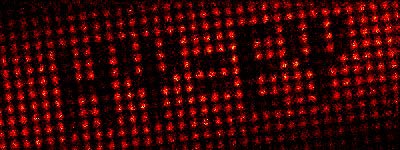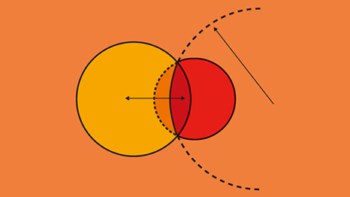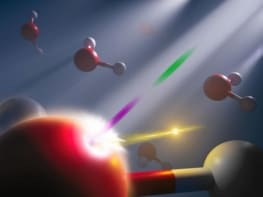
Over the past decade, physicists have been very successful at using optical lattices of ultracold atoms as “quantum simulators” to study interactions similar to those involved in superconductivity and other properties of solids. However, scientists had been unable to remove atoms from specific optical lattice sites – something that would allow these simulators to mimic a wider range of solid materials. Now, Herwig Ott and colleagues at Johannes Gutenberg University, Germany, have shown that it is possible to vacate lattice sites by firing an electron beam at the atoms.
Ott’s team began with tens of thousands of rubidium atoms that were cooled to temperatures fractionally above absolute zero. “Rubidium is the easiest element to laser cool – that is why we are using it,” explained Ott.
A 2D optical lattice with a periodicity of 600 nm was created by the interference pattern made by two perpendicular laser beams. Each lattice site had an average of 80 atoms, which were trapped by the optical dipole force created by the lasers.
The extremely low temperature of the atoms (about 100 nK) caused the collections of atoms at every site to behave as a Bose–Einstein condensate, which means that all the atoms are locked together in the lowest quantum state of the system.
Last year the team developed the first technique for taking images of the lattice by scanning an electron beam across the lattice and peering into individual lattice sites. Now, the researchers have adapted the technique to remove atoms from specific sites.
The electron beam causes some rubidium atoms to be ionized – and these are extracted from the lattice by an applied electric field. Other atoms just scatter electrons, but these atoms receive a kick that is large enough to overcome the dipole force that keeps them in the optical lattice. “If we shine [the electron beam] long enough into a lattice site, all the atoms are eventually removed,” Ott told physicsworld.com.
The team then confirmed the vacancies in the lattice using their electron-beam imaging technique. Indeed, the physicists were able to create and image a number of different patterns in the lattice including Schrödinger’s equation EΨ = HΨ.
Steve Rolston from the University of Maryland believes that one of the strengths of Ott’s work is that it sidesteps the use of optical techniques for imaging the lattice. “Most everyone to date has been using optical detection, which suffers from the diffraction limit,” he said. This prevents the resolving of details smaller than the optical spacing.
Rolston says that it is difficult to predict how much impact this work will have of other researchers in this field. “The patterning application will probably come first – because even if you cannot detect single atoms, you can probably be confident that you can destroy them with a high probability.
“This will allow the creation, by hand, of novel spatial states, which can allow much more flexibility in exploring the states of many-body systems.”
The work is reported in Physical Review Letters.



